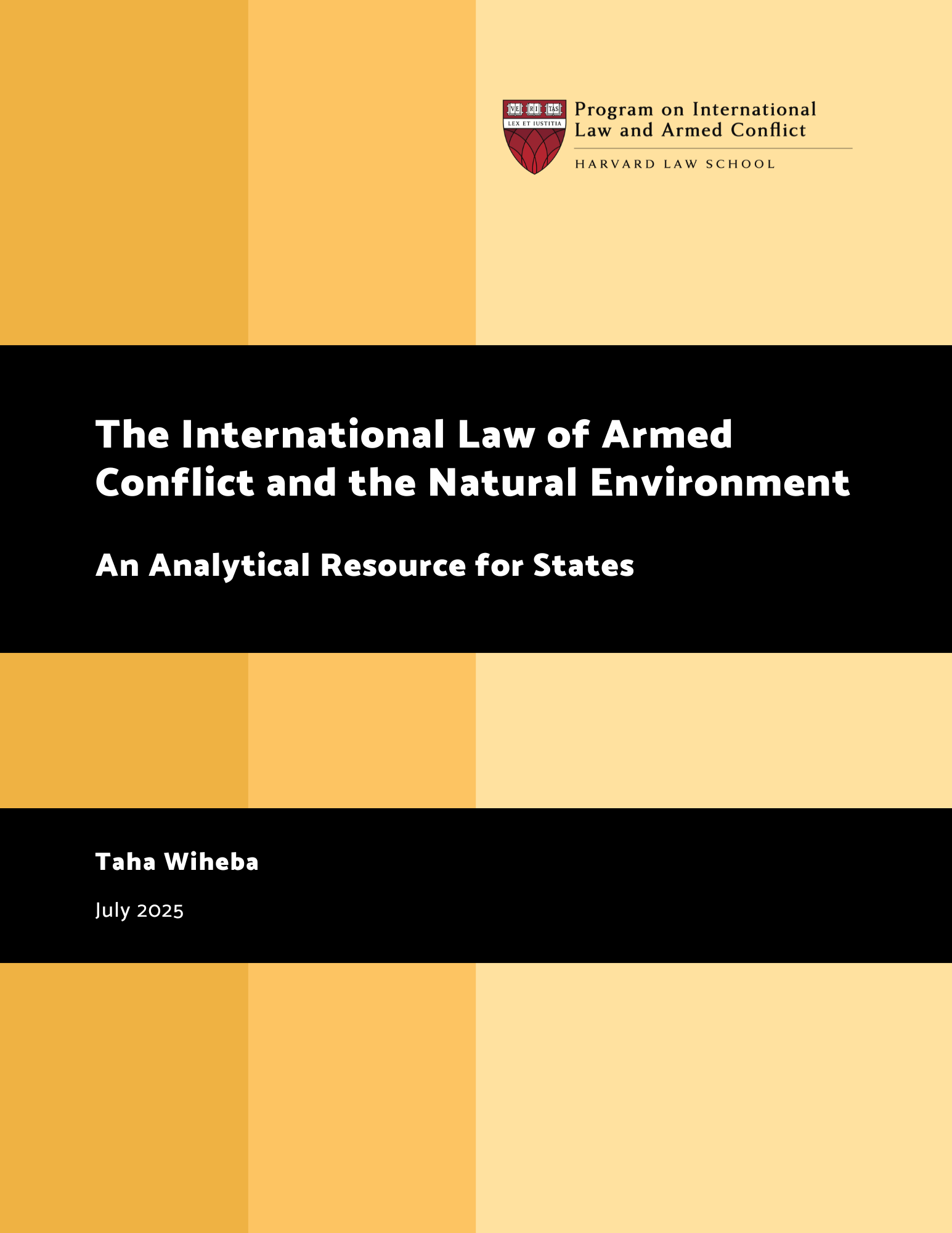Taha Wiheba, The International Law of Armed Conflict and the Natural Environment: An Analytical Resource for States, HLS PILAC, July 2025
Executive Summary
Environmental harm associated with armed conflict is becoming more severe, complex, and far-reaching. International humanitarian law (IHL), or the law of armed conflict (LOAC), provides certain protections for the natural environment in armed conflict. In the context of accelerating climate change, ecological degradation, and biodiversity loss, recent work on the topic evinces a need to highlight and analyze these protections, together with issues of interpretation and application, to further enhance respect for the underlying obligations.
While these safeguards remain vital, many foundational IHL/LOAC obligations were developed prior to the emergence of modern ecological science, accompanying technological advances, the growing recognition of climate-related and other systemic environmental risks, and the development of international environmental law (IEL). It is therefore also arguably warranted to critically examine whether, even if fully complied with, those obligations are capable of addressing the scope and character of environmental harm anticipated in connection with current and future armed conflicts.
This paper aims to contribute to recent and ongoing efforts by States, the International Law Commission, the International Committee of the Red Cross, and other actors to uphold and clarify legal protections for the environment in armed conflict. In particular, the paper seeks: to help keep this issue on the agenda of States and other relevant legal and policy communities; to examine certain key areas of IHL/LOAC with a view to enhancing respect for existing legal obligations and curbing environmental harm in war; and to provide a principled basis for reflecting on whether those obligations — as indispensable as they are — are adequate, in their current form and application, to respond to existing and emerging environmental threats. In doing so, the paper aims to support strengthened implementation and enhanced protection without undermining the integrity of extant legal frameworks.
To those ends, the paper examines a select set of IHL/LOAC obligations of particular salience to environmental protection in relation to armed conflict, specifically those pertaining to:
widespread, long-term, and severe damage to the natural environment;
distinction, proportionality, and precautions in attack;
objects indispensable to the survival of the civilian population;
works and installations containing dangerous forces; and
usufruct in situations of belligerent occupation.
Each of these areas is analyzed through a structured legal approach encompassing the following aspects: addressing the relations between treaty-based and customary IHL/LOAC; incorporating relevant IEL through the principle of systemic integration; and taking into account current scientific understanding, particularly concerning ecological and climate-related processes.
The paper distills legal questions that emerge from the analysis and outlines measures that might be taken toward implementing the obligations in practice. The paper also sets out some potential structural reflections intended to offer a legally and scientifically grounded conceptual vocabulary through which to configure a principled space for reflection on the adequacy of the existing legal framework in light of accelerating climate-related hazards and the growing body of scientific evidence on environmental risks associated with armed conflict. These and related considerations may be particularly relevant to legal advisers seeking: to reconcile military necessity with environmental protection; to assess whether existing IHL/LOAC principles and rules offer sufficient clarity for operational planning; or to determine how best to reflect ecological vulnerability in doctrinal development, military manuals, or multilateral dialogue.
Research Support
The author gratefully acknowledges Dustin A. Lewis, the Research Director of HLS PILAC, and Naz K. Modirzadeh, the Founding Director of HLS PILAC and a Professor of Practice at Harvard Law School, for assistance in conceptualizing, writing, and editing this paper. Invaluable research relied on in this paper was conducted by Daniel Levine-Spound, a former HLS PILAC Program Fellow, as well as by Sandy Alkoutami, Claire Beutter, Erica Chen, Hildur Hjörvar, Eoin Jackson, Jacqulyn Kantack, Sarah Lok, Michaela LeDoux, Quentin Levin, Tamar Ruseishvili, Zoe Shamis, Marianne Vitug, Yen Ba Vu, and Sabrina Zhang, who were HLS PILAC Research Assistants when they made their contributions.


